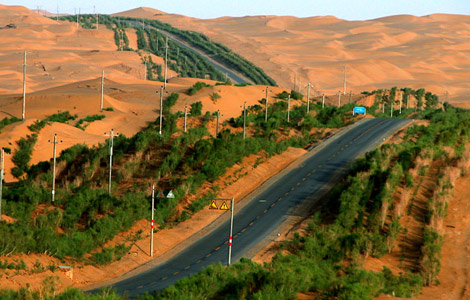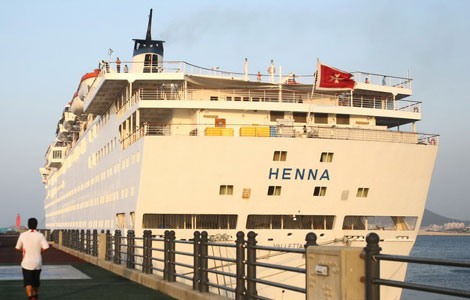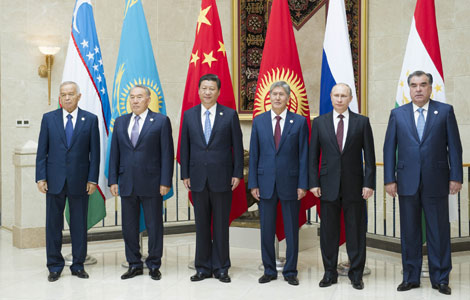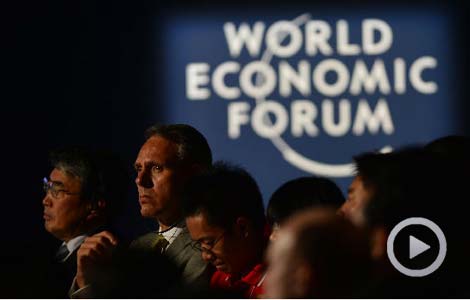New Frontiers ripe for exploitation
Updated: 2013-09-16 08:16
By Bao Chang in Beijing (China Daily)
|
||||||||
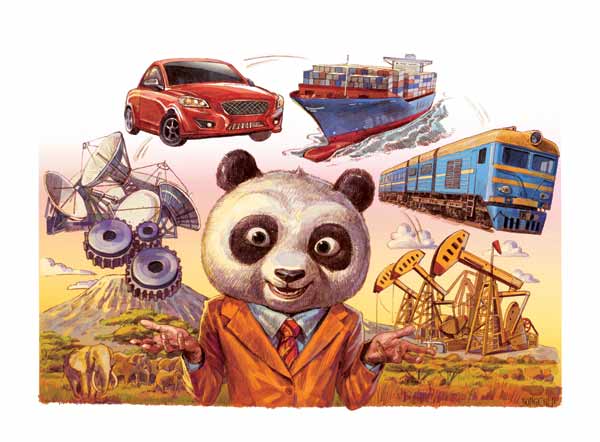
Enterprises that are State-owned are paving the way for sustainable African development
Zipping through the still-not complete modern expressways that make up the Congo National No 1 Road between Brazzaville, the capital of the Republic of Congo and the port city of Pointe-Noire, it is hard to believe that a Chinese State-owned firm has played a key role in resurrecting what was once a broken-down, abandoned and important transport lifeline in Africa.
Elsewhere in Africa, there is a buzz of activity at the various Special Economic Zones set up by Chinese SOEs in Zambia, Mauritius, Egypt, Ethiopia, Nigeria and Algeria. In Botswana, and Ghana construction projects developed by Chinese SOEs are making a difference by providing more jobs to local communities.
Juxtapose this with the bloated often flabby image of Chinese SOEs and the general perception is that they are behemoths who stifle competition, use up natural resources and hence are a drag on economic growth. The real picture that emerges from Africa, however, is of a new growth model, or rather a success story, built more on sustainable development, community transformation and profits.
"Chinese SOEs have played a key role in the sustainable development of resources in Africa. Through their efforts, the SOEs have been able to make great inroads into the local market and to other developed markets through re-exports," says Shi Yongxiang, a Beijing -based corporate management expert.
 |
Although they are often called China's new pillars of outbound investment, SOEs have also faced flak for pursuing a self-centered agenda, rather than national goals, in overseas markets. But with competent, cost-effective and speedy execution of big-ticket projects in Africa, Chinese SOEs have proved that profits and development can go hand-in-hand.
Speedy and timely executions of big infrastructure projects, along with adequate capital and resources to work even in hostile conditions have been the mainstay of Chinese SOEs in Africa, experts say.
Overseas assets of Chinese companies, running to more than 15,000 units worldwide, are estimated to be worth about $1 trillion and more than half of this comes from SOEs, according to data provided by the State-owned Assets Supervision and Administration Commission.
Liu Nanchang, director of the Performance Evaluation Bureau of the State-owned organization, says that Chinese SOEs will scale up their overseas presence substantially in the next decade. "During the next five to 10 years, we will see SOEs deploying more resources in overseas markets, especially Africa."
Investigations show that the return on investment in Africa is a high 36 percent, compared with 16 and 14 percent in Asia and global markets.
"SOEs find Africa appealing because of the complementary nature of its energy, agriculture and construction sectors," management expert Shi says.
Over the past decade, China's investment in Africa has risen steadily, from $75 million in 2003 to $2.9 billion by 2012. By the end of last year, cumulative investments from China to Africa had reached $19.2 billion, involving more than 2,000 Chinese companies and 51 countries and regions in the continent.
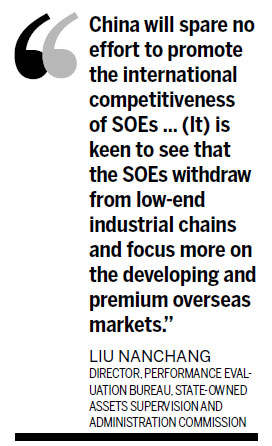 |
To understand the real impact of Chinese SOEs in Africa, one need only look at the massive road construction project near Mayombe in the Republic of Congo.
Mayombe, a huge virgin forest with more than 300 kinds of plants, is also right in the middle of what was once an important transport network in central Africa. The abandoned, crumbling 580 kilometer road network between Brazzaville and Pointe-Noire received a new lease of life after the State-owned China State Construction Engineering Corp undertook a massive reconstruction project in 2008.
Once construction is completed, the road is expected to benefit more than 65 percent of the Republic of Congo's population of 4.2 million. The 164 km first phase of the project was completed and opened to traffic in October 2011.
"Although a fully-functioning road was a dream for the Congolese people, it was a tough challenge for us. The old road was out of repair for several years and many parts had been submerged under forest growth and rainwater," says Li Jiqin, general manager of the overseas department at the CSCEC.
"Getting through the Mayombe forest was a formidable challenge for us because we had to battle tropical diseases, such as malaria, typhotoxin, filariasis and dengue fever and also worms, snakes and other dangerous animals," he says.
We were undaunted and decided to forge ahead, rather than give up, Li says, adding that the motto in those days was, "Go forward, go forward. Chinese people are making history in Mayombe."
The second phase of the project is now under way. The CSCEC plans to hire more local people in an effort to provide more job opportunities and boost local residents' salaries, company officials say. The first phase provided jobs to 4,000 locals, while the second phase has provided jobs to more than 3,000, they say.
Most Viewed
Editor's Picks

|

|

|

|

|

|
Today's Top News
UN chief gets report on Syria chemical weapons
Succession proves a tricky art in business
Going global? Not so easy
Japan switches off nuclear reactor
Summers withdraws from Fed chair contest
Chinese FM hails US-Russia deal
More foreigners get green cards
Fallen celebrity blogger says Net needs cleanup
US Weekly

|

|

